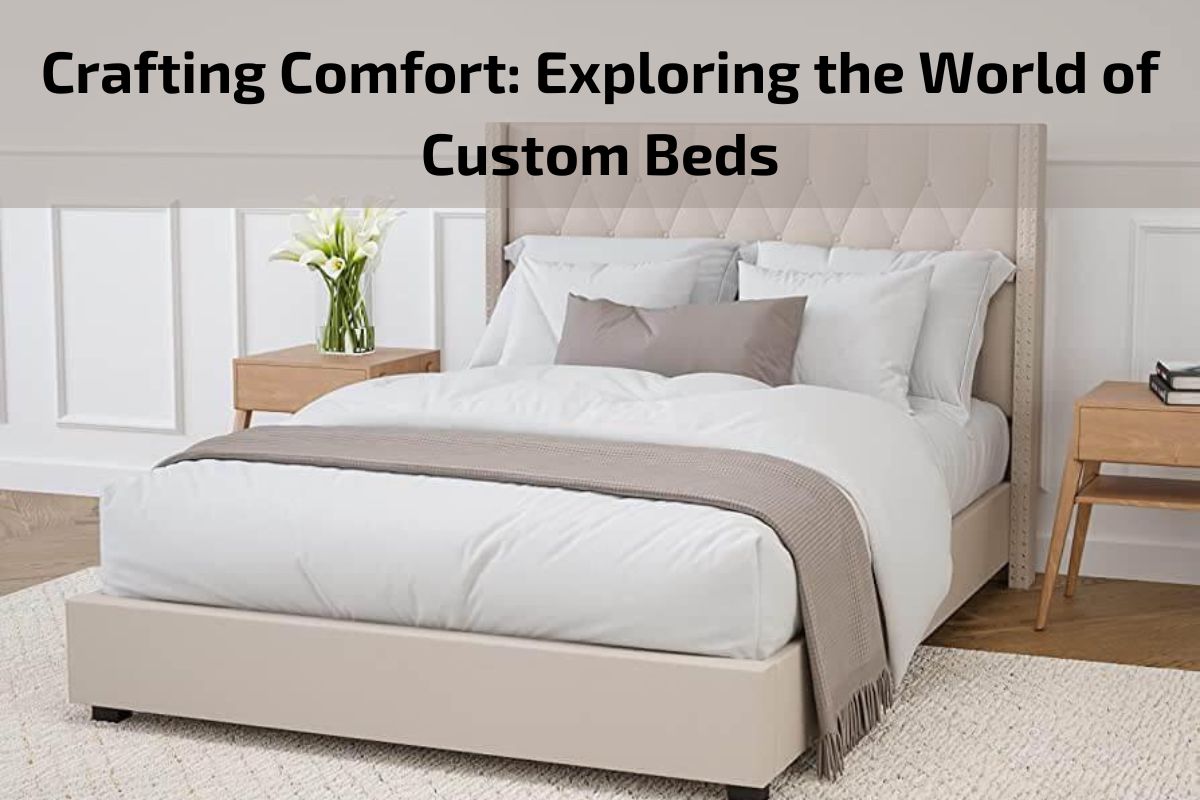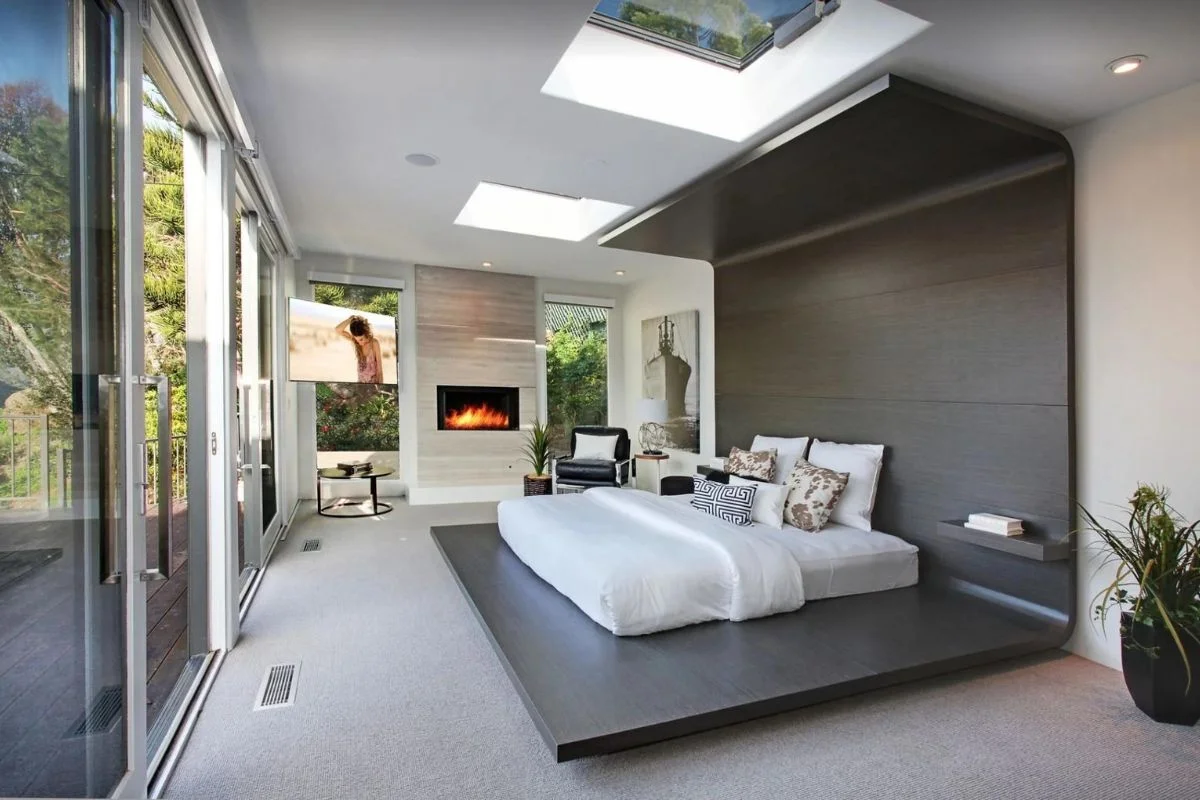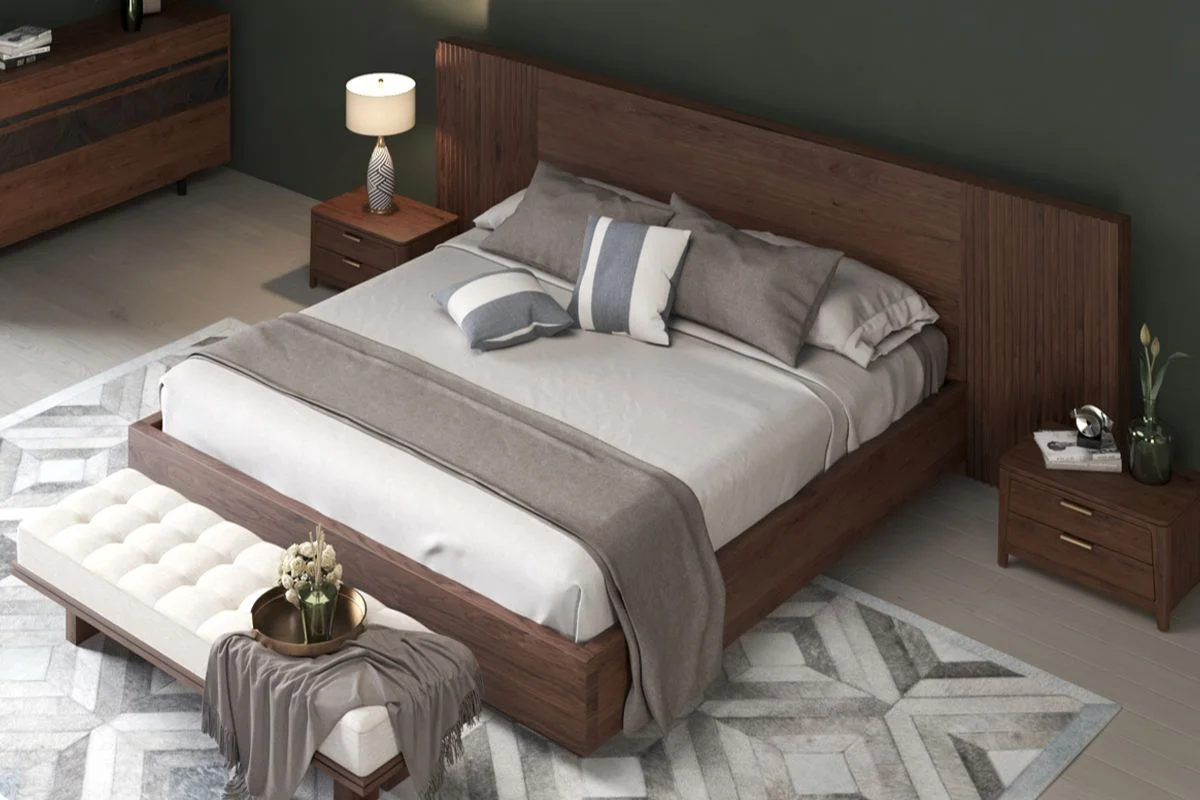
In the realm of interior design, the bed stands as the centerpiece of the bedroom – a sanctuary for rest and relaxation. But what if your ideal bed goes beyond the standard options available in stores? Enter the world of custom beds, where comfort meets creativity and every detail is tailored to your exact specifications. In this exploration of custom beds, we embark on a journey to uncover the endless possibilities for crafting a sleep oasis that perfectly suits your needs and style. From luxurious materials to innovative features, custom beds offer a unique opportunity to design a piece of furniture that reflects your personality and enhances your quality of sleep. Join us as we delve into the world of custom beds, where craftsmanship and comfort converge to create truly exceptional sleeping experiences.
Brief Overview of the Significance of Custom Beds in Interior Design:
Beds are not just pieces of furniture; they are the focal point of any bedroom, setting the tone for the entire space. In interior design, the bed plays a pivotal role in defining the style, ambiance, and functionality of the room. With the growing emphasis on personalization and tailored experiences, custom beds have emerged as a significant trend in interior design.
Custom beds offer a unique opportunity for individuals to express their personality and preferences through their bedroom furniture. Unlike mass-produced beds, custom beds are designed and crafted to meet the specific needs and desires of the user, resulting in a truly one-of-a-kind piece that perfectly complements the overall design scheme of the room.
From customized sizes and shapes to personalized materials, colors, and design features, custom beds allow homeowners to create a sleeping environment that is both aesthetically pleasing and supremely comfortable. Whether it’s incorporating built-in storage solutions, selecting eco-friendly materials, or integrating cutting-edge technology, the possibilities for customization are virtually endless.
In addition to enhancing the visual appeal of the bedroom, custom beds also contribute to a sense of luxury and exclusivity. By investing in a bespoke bed tailored to their exact specifications, individuals can elevate their sleep experience to new heights, creating a sanctuary where they can relax, unwind, and recharge after a long day.
Advantages and Disadvantages of Custom Beds:
Advantages:
Personalization: Custom beds offer the opportunity for personalized design, allowing individuals to tailor the bed to their specific preferences, including size, materials, and design features.
Enhanced Comfort: By customizing factors such as mattress firmness, thickness, and materials, users can achieve optimal comfort and support tailored to their individual sleep needs.
Unique Aesthetic: Custom beds can serve as focal points in bedroom design, adding a unique touch and enhancing the overall aesthetic appeal of the space.
Quality Craftsmanship: Custom beds are often crafted with attention to detail and superior craftsmanship, resulting in high-quality, durable furniture that can last for years.
Address Specific Needs: Custom beds can be designed to accommodate specific needs or preferences, such as storage requirements, accessibility features, or special medical considerations.
Disadvantages:
Higher Cost: Custom beds typically come with a higher price tag compared to mass-produced options due to the personalized nature of the design and craftsmanship involved.
Longer Lead Times: Custom beds may require a longer lead time for design, production, and delivery compared to ready-made options, which can be less convenient for those in need of a bed quickly.
Limited Availability: Custom beds may be less readily available compared to standard options, as they often require collaboration with a specialized manufacturer or designer.
Design Limitations: While custom beds offer flexibility in design, there may be limitations based on budget, available materials, or technical constraints, which could impact the final design outcome.
Potential for Over-Design: In some cases, the desire for customization may lead to over-designing the bed, resulting in unnecessary features or complications that detract from its functionality and aesthetic appeal.
Making Room for Comfort: Custom Beds for Small Spaces
Space-Saving Designs: Custom beds for small spaces are specifically engineered to maximize every inch of available room, offering innovative solutions to fit comfortably in compact bedrooms.
Multi-Functional Features: Many custom beds for small spaces incorporate built-in storage compartments, such as drawers or shelves, to optimize organization and minimize clutter in limited areas.
Adjustable Configurations: Custom beds can be designed with adjustable features, such as retractable platforms or foldable frames, allowing for flexible use of space during different times of the day.
Loft and Bunk Bed Options: Loft beds and bunk beds are popular choices for small bedrooms, utilizing vertical space efficiently and creating additional floor space for other furniture or activities.
Customized Dimensions: Unlike standard beds, custom beds can be tailored to fit specific room dimensions, ensuring a perfect fit even in the most challenging layouts.
Integrated Technology: Some custom beds for small spaces are equipped with integrated technology, such as USB charging ports or built-in lighting, to enhance functionality and convenience in compact environments.
Elevated Aesthetics: Despite their compact size, custom beds for small spaces are designed with attention to aesthetics, offering stylish and modern options to complement any décor scheme.
Modular Designs: Modular custom beds allow for versatility in arrangement, enabling users to reconfigure the bed layout according to their changing needs or preferences over time.
Custom Mattress Options: Custom beds often offer a range of mattress options, including thinner profiles or specialized materials, to ensure maximum comfort without sacrificing valuable space.
Personalized Style Choices: From sleek and minimalist designs to more elaborate and ornate styles, custom beds for small spaces can be customized to reflect the individual preferences and tastes of the user, adding a personal touch to the bedroom aesthetic.
Sustainability and Eco-Friendly Practices in Custom Bed Manufacturing:
Importance of Sustainability:
Overview: Explanation of the growing importance of sustainability in the furniture industry and its impact on custom bed manufacturing.
Environmental Concerns: Discussion of the environmental challenges posed by traditional manufacturing practices, including deforestation, carbon emissions, and waste generation.
Consumer Awareness: Recognition of the increasing consumer demand for eco-friendly products and the role of sustainability in purchasing decisions.
Eco-Friendly Materials and Sourcing:
Sustainable Wood: Explanation of the use of responsibly sourced wood from certified forests or reclaimed sources in custom bed manufacturing.
Alternative Materials: Exploration of eco-friendly alternatives to traditional materials, such as bamboo, rattan, or recycled materials.
Low-VOC Finishes: Discussion of the importance of using low-VOC (volatile organic compound) finishes and adhesives to minimize indoor air pollution and protect human health.
Energy-Efficient Production Processes:
- Lean Manufacturing: Introduction to lean manufacturing principles aimed at reducing waste, improving efficiency, and minimizing energy consumption.
- Renewable Energy: Implementation of renewable energy sources, such as solar or wind power, to reduce carbon emissions and dependence on fossil fuels in the production process.
- Energy-Efficient Equipment: Adoption of energy-efficient machinery and equipment to minimize energy consumption and greenhouse gas emissions during manufacturing.
Waste Reduction and Recycling:
- Material Recycling: Explanation of efforts to recycle and repurpose manufacturing waste, offcuts, and by-products to minimize landfill waste and resource depletion.
- Closed-Loop Systems: Introduction to closed-loop manufacturing systems that aim to eliminate waste by reusing materials and components in the production process.
- Product Lifecycle Management: Consideration of product durability, repairability, and end-of-life recycling options to minimize environmental impact throughout the product lifecycle.
Certifications and Standards:
- Forest Stewardship Council (FSC): Explanation of the FSC certification and its significance in ensuring responsible forest management and sustainable wood sourcing.
- GREENGUARD Certification: Introduction to the GREENGUARD certification program, which verifies low chemical emissions from products and contributes to healthier indoor air quality.
- Cradle to Cradle Certification: Overview of the Cradle to Cradle certification process, which evaluates products based on their environmental and social impact throughout their lifecycle.
Collaboration and Transparency:
- Supply Chain Transparency: Importance of transparency in the supply chain to ensure accountability and traceability of materials from source to production.
- Collaboration with Suppliers: Discussion of collaborative efforts between custom bed manufacturers and suppliers to promote sustainable practices and innovation.
- Consumer Education: Recognition of the role of consumer education in raising awareness about sustainable practices and empowering consumers to make informed purchasing decisions.
Maintenance Tips for Custom Beds:
Regular Cleaning: Dust and vacuum your custom bed frame, headboard, and mattress regularly to remove dirt, dust, and debris that can accumulate over time. Use a soft brush attachment to avoid scratching or damaging the surfaces.
Protect Against Moisture: Avoid placing custom beds in areas prone to moisture, such as near windows or humid environments, as this can lead to mold and mildew growth. Use moisture-resistant materials or protective coatings to safeguard against moisture damage.
Rotate Mattress: To ensure even wear and prolong the lifespan of your custom mattress, rotate it regularly (approximately every 3-6 months). This helps distribute body weight evenly and prevents sagging in specific areas.
Use Proper Bedding: Invest in high-quality mattress protectors, fitted sheets, and pillowcases to protect your custom bed from spills, stains, and wear. Wash bedding regularly according to manufacturer instructions to maintain hygiene and freshness.
Check and Tighten Hardware: Periodically inspect the hardware, such as screws, bolts, and brackets, on your custom bed frame to ensure they are securely tightened. Loose hardware can compromise the stability and safety of the bed.
Avoid Overloading: Be mindful of the weight capacity of your custom bed and avoid overloading it with excessive weight or items. This helps prevent strain on the frame and prolongs its durability.
Protect Against Sunlight: Direct sunlight can cause fading and discoloration of wood finishes and fabrics. Position your custom bed away from windows or use window treatments to block harmful UV rays and preserve its appearance.
Address Damage Promptly: If you notice any signs of damage, such as cracks, scratches, or loose joints, address them promptly to prevent further deterioration. Repair or replace damaged components as needed to maintain the integrity of your custom bed.
Follow Manufacturer Guidelines: Refer to the manufacturer’s guidelines and care instructions specific to your custom bed for proper maintenance practices. Adhering to these guidelines helps ensure optimal performance and longevity.
Professional Inspection: Consider scheduling periodic professional inspections and maintenance for your custom bed, especially if it incorporates specialized features or materials. A professional can identify any potential issues and perform necessary repairs or adjustments to keep your bed in top condition.
Conclusion:
In conclusion, custom beds offer a unique opportunity to create a personalized and luxurious sleeping environment that reflects individual preferences and enhances the overall aesthetic of the bedroom. From tailored design elements to customized features and materials, custom beds allow homeowners to express their style and prioritize comfort and functionality.


